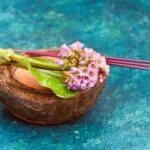When it comes to discussing wellness practices, two terms that are often used interchangeably are essential oils and aromatherapy. Many people wonder if these two concepts are one and the same, or if there are distinct differences between the two. Understanding the relationship between essential oils and aromatherapy is essential for anyone looking to incorporate these practices into their daily routine.
Essential oils and aromatherapy go hand in hand, but they are not identical. Essential oils are highly concentrated plant extracts that have been used for centuries for their therapeutic properties. Aromatherapy, on the other hand, involves using these essential oils to promote physical, emotional, and psychological well-being through inhalation or skin absorption.
The origins and history of essential oils and aromatherapy date back thousands of years when ancient civilizations recognized the healing properties of plants. Today, these practices have gained popularity in the wellness industry as people seek natural alternatives for health and relaxation. Exploring how these traditions have evolved over time can provide valuable insight into their modern-day uses and benefits.
Origins and History of Essential Oils and Aromatherapy
The use of essential oils and aromatherapy has been around for centuries, with roots in ancient civilizations such as Egypt, China, and India. The practice of using aromatic plant extracts for medicinal, spiritual, and cosmetic purposes dates back thousands of years. In fact, the earliest record of essential oils being used can be traced back to 4500 B.C. in ancient Egypt, where they were often used in embalming rituals and for their healing properties.
Early Origins
Aromatherapy as we know it today has its origins in the ancient practice of using plant extracts for their therapeutic benefits. The ancient Egyptians were known to have used essential oils for religious ceremonies, medicinal purposes, and even in daily life. They were also known to be skilled in distillation techniques and were among the first to document their uses of various plant oils.
Spread and Influence
The use of essential oils and aromatherapy spread to other ancient civilizations such as Greece, Rome, Persia, and China. Each culture developed its own methods of extracting essential oils from plants and incorporating them into various aspects of life. By the Middle Ages, the Arabian world had become a hub for the production and trade of aromatic oils. Aromatherapy continued to evolve over time with advancements in technology and scientific understanding, eventually becoming a popular practice worldwide.
Today, essential oils and aromatherapy continue to be an integral part of many cultures around the world. The historical influence of these practices is evident in the variety of traditional remedies that are still used today. Whether through massage therapy or diffusing essential oils at home, the historical significance of aromatherapy continues to have a lasting impact on modern wellness practices.
How Essential Oils Are Made and Used
Essential oils are concentrated liquids that contain the volatile aroma compounds from plants. These oils are typically extracted through a process of distillation, often using steam. The plants used for essential oil extraction can include flowers, leaves, stems, roots, or bark. Once the essential oil is extracted, it can be used in a variety of ways to promote physical and psychological well-being.
There are several methods used to extract essential oils from plants including steam distillation, cold-press extraction, and solvent extraction. Each method is chosen based on the type of plant material being used and the desired outcome for the essential oil. Once extracted, essential oils can be used in a number of ways including:
- Aromatically: Inhaling the aroma of essential oils through methods such as diffusing, direct inhalation, or using personal inhalers.
- Topically: Applying essential oils directly to the skin through massage, compresses, or adding them to bath water.
- Internally: While not all essential oils are safe for internal use, some can be taken orally under the guidance of a qualified healthcare practitioner.
It’s important to note that not all essential oils are safe for all uses or for all individuals. Some oils can cause skin irritation or allergic reactions if applied topically without proper dilution. Additionally, ingesting certain essential oils can be toxic if done incorrectly. It’s crucial to educate yourself about each individual oil you plan to use and follow safety guidelines before incorporating them into your daily routine.
The Science Behind Essential Oils and Aromatherapy
When it comes to essential oils and aromatherapy, there is actual science behind the effectiveness of these natural remedies. Essential oils are concentrated extracts from plants that have been used for centuries for their healing properties. These oils are extracted through various methods such as distillation or cold pressing, which helps preserve their potent aromatic compounds.
The science behind aromatherapy lies in how our sense of smell can affect our mood, emotions, and even physical health. When we inhale the aroma of essential oils, the molecules travel through the nasal passages and stimulate the olfactory system. This triggers a reaction in the brain that can impact the limbic system, which is responsible for regulating emotions and memories.
Some of the most common essential oils used in aromatherapy include lavender, peppermint, tea tree, and eucalyptus. Each oil has its own unique chemical composition that contributes to its therapeutic effects. For example, lavender oil contains linalool and linalyl acetate, which have been shown to have calming and sedative properties when inhaled. Understanding the science behind these chemical components can help individuals make informed decisions about which essential oils to use for specific purposes.
- Essential oils are extracted through methods such as distillation or cold pressing
- Inhaling essential oil aromas can stimulate the olfactory system and impact the limbic system in the brain
- Each essential oil has a unique chemical composition that contributes to its therapeutic effects
Benefits of Essential Oils in Aromatherapy
When it comes to the benefits of essential oils in aromatherapy, there are numerous advantages that have been recognized by both traditional and modern practitioners. Aromatherapy, which involves the use of essential oils for therapeutic purposes, has been shown to provide a wide range of physical and mental health benefits.
Stress Reduction
One of the most well-known benefits of essential oils in aromatherapy is their ability to help reduce stress and promote relaxation. Certain essential oils, such as lavender and chamomile, have been found to have calming effects on the mind and body when used in aromatherapy. By inhaling these fragrant oils or using them in massage or baths, individuals may experience a decrease in anxiety and an overall sense of calm.
Improved Sleep Quality
Another key benefit of using essential oils in aromatherapy is their potential to improve sleep quality. Essential oils like bergamot, sandalwood, and ylang-ylang are often used in aromatherapy practices to help promote better sleep by inducing a state of relaxation. Many people find that incorporating these essential oils into their bedtime routine can lead to a more restful night’s sleep.
Mood Enhancement
In addition to reducing stress and improving sleep quality, essential oils used in aromatherapy can also be beneficial for enhancing mood. Scents like citrus (lemon, sweet orange) and peppermint are known for their uplifting properties, which can help improve mood and increase feelings of positivity. For individuals dealing with mild depression or experiencing emotional distress, the use of these essential oils in aromatherapy may offer a natural way to boost mood and emotional well-being.
Common Misconceptions About Essential Oils and Aromatherapy
There are several common misconceptions about essential oils and aromatherapy that can lead to misunderstandings and misuse. One of the most prevalent misconceptions is that essential oils and aromatherapy are the same thing. In reality, essential oils are concentrated plant extracts, while aromatherapy is the practice of using these oils for therapeutic purposes. It’s important to understand that while aromatherapy often involves the use of essential oils, it also encompasses other elements such as massage, inhalation, and topical application.
Another misconception is that all essential oils are safe for use. While many essential oils have beneficial properties, not all of them are suitable for everyone.
Some people may have allergies or sensitivities to certain oils, and some essential oils can be toxic if ingested or used in high concentrations. It’s crucial to research and properly dilute essential oils before using them, especially if you plan to apply them directly to the skin or use them around children or pets.
Furthermore, there is a misconception that aromatherapy is just a passing trend or a pseudoscience. In reality, numerous studies have been conducted on the effects of aromatherapy, showing evidence of its potential benefits for various conditions such as stress, anxiety, insomnia, and pain management. While more research is needed to fully understand the mechanisms behind these effects, it’s clear that aromatherapy has been practiced for centuries across different cultures for its potential healing properties.
| Common Misconceptions | Clarification |
|---|---|
| Essential oils and aromatherapy are the same thing. | They are not; essential oils are concentrated plant extracts while aromatherapy refers to the practice of using these oils therapeutically. |
| All essential oils are safe for use. | Not all essential oils are safe for everyone; some can cause allergies or toxicity if used improperly. |
| Aromatherapy is just a passing trend or pseudoscience. | Research has shown evidence of potential benefits from aromatherapy for various conditions. |
Safety and Precautions When Using Essential Oils and Aromatherapy
Understanding the safety and precautions when using essential oils and aromatherapy is crucial to maximize their benefits while minimizing potential risks. It is important to remember that essential oils are highly concentrated plant extracts, and as such, they must be used with care and respect.
One of the most important precautions when using essential oils is to always dilute them properly before applying them to the skin. This helps reduce the risk of skin irritation or sensitization, especially for those with sensitive skin.
It is also crucial to be aware of any potential allergies you may have to specific essential oils. Before using a new essential oil, it’s advisable to perform a patch test on a small area of your skin to check for any adverse reactions.
In addition, pregnant women, nursing mothers, infants, and young children should exercise caution when using essential oils, as some oils may not be safe for them. Consulting with a qualified healthcare professional before using essential oils in these cases is recommended.
Proper storage of essential oils is another important safety consideration. Essential oils should be kept in dark glass bottles away from direct sunlight and heat to maintain their potency and prevent degradation. Additionally, it’s important to keep essential oils out of reach of children and pets to avoid accidental ingestion or misuse.
| Safety Measures | Precautions |
|---|---|
| Always dilute before applying to skin | Avoid use if pregnant or nursing |
| Perform patch test before use | Keep out of reach of children and pets |
| Store in dark glass bottles | Awareness of allergic reactions |
Incorporating Essential Oils and Aromatherapy Into Your Daily Routine
In conclusion, while essential oils and aromatherapy are closely related, they are not exactly the same. Essential oils are the concentrated extracts from plants, which can be used for various purposes including aromatherapy. Aromatherapy, on the other hand, is a holistic healing treatment that uses natural plant extracts to promote health and well-being. Understanding the difference between the two can help individuals make informed decisions about incorporating them into their daily routine.
The origins and history of essential oils and aromatherapy date back thousands of years, with evidence of their use found in ancient civilizations such as Egypt, China, and India. Today, essential oils and aromatherapy continue to be popular due to their potential therapeutic benefits such as reducing stress and anxiety, improving sleep quality, and boosting mood. When used safely and responsibly, they can enhance one’s overall health and wellness.
When incorporating essential oils and aromatherapy into your daily routine, it’s important to do so with caution. Use only high-quality, pure essential oils from reputable sources to ensure safety and effectiveness. Additionally, consider consulting with a qualified aromatherapist or healthcare professional to determine the best approach for your specific needs. By taking these precautions, you can enjoy the many benefits that essential oils and aromatherapy have to offer while minimizing any potential risks.
Frequently Asked Questions
Are Aromatherapy Oils the Same as Essential Oils?
Aromatherapy oils and essential oils are not exactly the same, although they are closely related. Essential oils are a concentrated liquid containing volatile aromatic compounds extracted from plants, while aromatherapy oils refer to a blend of various essential oils used for therapeutic purposes.
How Do You Use Essential Oils as Aromatherapy?
Essential oils can be used for aromatherapy through several methods, including diffusion, inhalation, and topical application. Diffusion involves dispersing the essential oil molecules into the air using a diffuser or simply inhaling the scent directly from the bottle.
Inhalation can also be done by placing a few drops of essential oil on a cloth or tissue and breathing in the aroma. When using essential oils topically, it’s important to dilute them with a carrier oil before applying them to the skin.
Can I Use Aromatherapy Oils on My Skin?
Some aromatherapy oils can be safely used on the skin when properly diluted with a carrier oil, such as coconut oil or almond oil. However, it’s important to do a patch test before using any new aromatherapy oil on your skin to ensure you don’t have an adverse reaction.
Not all essential oils should be applied directly to the skin, so it’s crucial to research each individual oil before using it in this way.

Are you looking for a natural way to improve your health and wellbeing?
If so, aromatherapy may be the answer for you.





